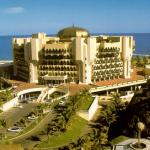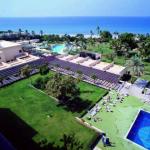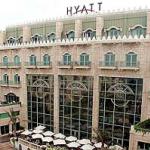Oman Transport
 Almost all shipments of long-distance road and carried by air. The bulk of traffic is vehicles - buses ONTC public company and private carriers. Intercity buses are modern, air conditioned and kept in a high speed road. Ticket prices are low (almost across the whole country can go for 10-12 rials). Tickets can be purchased at the box office or bus station (in the case of a private carrier) from the driver.
Almost all shipments of long-distance road and carried by air. The bulk of traffic is vehicles - buses ONTC public company and private carriers. Intercity buses are modern, air conditioned and kept in a high speed road. Ticket prices are low (almost across the whole country can go for 10-12 rials). Tickets can be purchased at the box office or bus station (in the case of a private carrier) from the driver.In major cities, municipal transport has a rather small number of lines, the range of motion which is usually 20-30 minutes. Travel costs from 100 to 300 bass, depending on the distance. Shields with the number of routes, major stops and schedules posted at stops (often only in Arabic). Buses run from 6.30 to 22.00-22.30.
By busiest lines ply shuttles leaving from the end points or on a schedule, or at least fill the cabin. The fare for intercity taxi about 3 rials per 100 km., In the city limits - a maximum of 1 riyal. There are also so-called passenger shuttle bus ( "shared taxi"), which typically run between the city center (or station) and the main areas. In the car fits 4 passengers, but often the driver goes from 1-2 passengers in the cabin, and helped others on the road. You can pay for the remaining seats and to leave alone. The fare is usually around 300 bass per trip from Muscat to Nizwa (almost 150 km.) Can reach up to 2 rials.
Roads and driving rules
Right-hand movement. Main roads are maintained in excellent condition, in the province of many dirt roads, which, nevertheless, attain to the level regularly. On the road constantly leave pets (and sometimes their herds distilled directly on the canvas) and local residents. In the southern areas in the rainy season roads are often overlapped turbulent flows suddenly "revived" wadi. Often, after such heavy rains, many parts of the road covered with a thick layer of mud and sand. Omani drivers are not known for a special reverence for the SDA, but differ markedly better than the drivers of other Arab countries - is taken to give way (usually about double flashing warning lights), the behavior on the road more carefully about all the obstacles on the road in front of the car going warn rear flashing marker lights, pedestrians are generally given priority in crossing the intersection, and high-speed mode is almost not violated. The permitted speed in the city - 50-60 km / h on express routes - 100-120 km / h. Traveler's rather stringent rules - seat belts must be worn, speeding and mobile phone use while driving is prohibited. In some places the road is controlled by stationary radar and police posts. When speeding vehicle is photographed and a receipt is sent to the company by renting a car. Argue with the police is futile, and sometimes it may lead to prosecution. Fines quite large.
Many highways in densely populated areas and in urban areas have overlapping parallel two-way street. Rush hour on Omani roads occurs between noon and 14.00, when and in cities and in rural areas, ending lessons in schools. At many intersections circular motion (indicated by R / A). Such roundabout have their own names and often give a name to the area, which is located around them. The advantage of the motion in such places use machines that are located on the junction. In the normal sequence of unregulated intersection of travel solved by mutual agreement. In the historical city center parking is often prohibited, and police have the right to evacuate such a machine in order to avoid traffic jams.
Taxis are usually painted in orange and white color and are found everywhere. Drivers in them, unlike other modes of transport, work, indigenous Omanis. Travel expenses negotiated and typically less than 10 riyals for a trip across town. At night the price is much higher.

